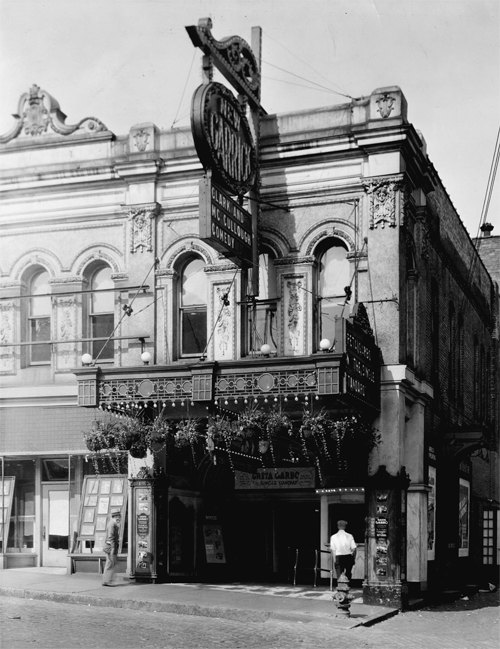Rex/New Garrick Theater

The New Garrick in 1929, photographer unknown. [Image: UM Libraries NAA]
18–20 Second Ave. W. | Architects: Holstead & Sullivan | Built: 1913 | Lost, 1956
English immigrant Thomas Furniss caught the theater bug as a child, performing with the George Primrose Minstrels in 1881 when he was just thirteen years old. By 1901 he was running the Brunswick Amusement Company in Superior, Wisconsin, which sold Edison Phonographs, Victor Talking Machines, and “Music Boxes, Picture Machines and Coin Operated Machines of all kinds.” In 1908 Furniss crossed the bay to open Duluth’s first Orpheum Theater, a small movie house that occupied the eastern half of a modest two-story building at 114 West Superior Street. Two years later he leased the western half, opening it as the Lyric Theater. His Orpheum became the Odeum after Guilford Hartley’s Orpheum vaudeville house opened in 1910, but he closed it in 1913 when Brunswick Amusement built the Rex Theater along the eastern side of Second Avenue West above the alley between Superior and First Streets.
The two-story Neoclassical Rex Theater Building, which faced Second Avenue West, was not simply a performance space: its entrance was in the southernmost of three retail storefront bays, one occupied by Howard, Farwell & Co, Duluth’s “Oldest Reliable Piano Dealers.” Architects Abraham Holstead and William Sullivan chose to adorn its front façade with terra-cotta embellishments. Patrons entered the theater’s foyer—adorned with marble pilasters, tile floors, and an elaborately ornamented ceiling—and proceeded to the auditorium via four wide archways. The Duluth News Tribune described the auditorium as “magnificent in its brilliancy of color and gold and ornamental plaster” and noted that its walls were divided by fluted Ionic pilasters. It held 640 patrons; the balcony sat 400 more and was and encircled by seventeen private boxes that sat six people each, bringing the theater’s capacity to 1,142.

Mural above the New Garrick’s proscenium arch prior to its 1940 renovation. [Image: UM Libraries NAA]
In 1919 Furniss hired the former Orpheum Symphony Orchestra to perform as the Rex Symphony Orchestra, but the musicians’ stay at the Rex was short lived. Furniss retired from the theater game that year, selling both the Rex and Lyric to the Twin City Amusement Company, whose principals included Isaac Ruben, Moses Finkelstein, and William Hamm of St. Paul’s Hamm Brewing Company. The new owners renamed the Lyric the New Lyric and the Rex was rechristened as the New Garrick. Later that year the Twin City Amusement Company merged with Duluth’s Cook Brothers, who owned Duluth’s New Grand Theater and the Palace Theater in Superior, which was renamed the New Palace. The New Garrick underwent a renovation in 1921, adding a stage for live performances that was “capable of handling any production, even large road shows.” Changes included a “Spanish motif” that covered its brick with stucco and placed a new, elaborate awning over the entrance.

The theater underwent another renovation in 1930, and in 1934 “New” was dropped from the theater’s name. Sometime in the 1930s both the Garrick and the Lyric were acquired by the Minnesota Amusement Company, which planned to renovate both and convert the 1910 Orpheum Theater into a movie house. The Garrick’s renovation, completed in August 1940, included new carpet and paint inside while the exterior’s stucco was replaced with ivory-colored porcelain enamel trimmed in blue. Despite the changes, the Garrick struggled after the World War II ended, closing in 1955. The building was razed the following year, replaced with a parking ramp.

The Garrick auditorium’s stage prior to its 1940 renovation. [Image: UM Libraries NAA]










